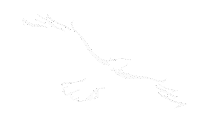CHAPTER II.
A description of the Totemic System--Tradition of its
origin--List of the different Totemic badges--The A-waus-e or "Great Fish"
clan--Its subdivisions--Physical characteristics--Tradition of the Awause--Present
position and numbers of this clan among the O-jib-ways--Bus-in-as-e, or
Crane Totem clan--Their position in the tribe--Physical
characteristics--Names of their most noted chiefs--Ah-awh-wauk or Loon Totem
clan--Position and claims--Their principal chiefs--Noka, or Bear
Totem--Their numbers and position in the tribe--Physical
characteristics--Their war chiefs--The Wolf Totem--Its position and
origin--Chiefs--Monsoneeg; or Moose and Marten Totem--Their origin, and
names of most noted men--Tradition accounting for their coalition--Addik, or
Reindeer Totem--Totemic system deserving of more research.
There is nothing so worthy of observation and study, in the
peculiar customs and usages of the Algic type of the American aborigines, as
their well-defined partition into several grand clans or families.
This stock comprises a large group of tribes, distinct
from each other, not only in name and locality, but also in the manner of
uttering their common generic language. Yet this division, though an
important one and strongly defined, is but a sub-division, which has been
caused by domestic quarrels, necessity, or caprice, and perpetuated by long
and wide separations and non-intercourse. These causes are related in their
traditions, even where the greatest variance is found to exist between
tribes. The separation does not date many centuries back. The first grand
division is that of blood and kindred, which has been perpetuated amongst
the different tribes by what they call the Totemic System, and dates back to
the time "when the Earth was new."
Each grand family is known by a badge or symbol, taken
from nature; being generally a quadruped, bird, fish, or reptile. The badge
or Dodaim (Totem, as it has been most commonly written), descends invariably
in the male line; marriage is strictly forbidden between individuals of the
same symbol. This is one of the greatest sins that can be committed in the
Ojibway code of moral laws, and tradition says that in former times it was
punishable with death.
In the Iroquois Book of Rites, edited by Horatio Hale,
Number 2 of Brinton's Library of Aboriginal American Literature, there is
the following statement. pp. 51, 52, as to the clan system.
"There are many indications which seem to show that the
system is merely an artificial arrangement instituted for social
convenience. It is natural, in the sense, that the desire for association is
natural to man. The sentiment is one, which manifests itself alike in all
stages of society. The guilds of the Middle Ages, the Masonic and other
secret brotherhoods, religious organizations, trade unions, clubs and even
political parties are all manifestations of this associative instinct. The
Indian clan was simply a brotherhood or aggregate of persons, united by a
common tie. What the founders of the Iroquois League did was to extend this
system of social alliances through the entire confederacy. The Wolf
clans-man of the Caniengas is deemed a brother of the Wolf clans-man of the
Senecas, though originally there may have been no special connection between
them."--E. D. N.
In the present somewhat degenerated times, when persons of
the same Totem intermarry (which even now very seldom occurs), they become
objects of reproach. It is an offence equivalent among the whites to the sin
of a man marrying his own sister.
In this manner is the blood relationship strictly
preserved among the several clans in each tribe, and is made to extend
amongst the different tribes who claim to derive their origin from the same
general root or stock, still perpetuating this ancient custom.
An individual of any one of the several Totems belonging
to a distinct tribe, as for instance, the Ojibway, is a close blood relation
to all other Indians of the same Totem, both in his own and all other
tribes, though he may be divided from them by a long vista of years,
interminable miles, and knows not even of their existence.
I am not possessed of sufficient general information
respecting all the different groups of tribes in America, to enable me to
state positively that the Algics are the only stock who have perpetuated and
still recognize this division into families, nor have I even data sufficient
to state that the Totemic System is as rigidly kept up among Other tribes of
the Algonquins, as it is among the Ojibways, Ottaways, and Potta-wat-om-ies.
From personal knowledge and inquiry, I can confidently
assert that among the Dakotas the system is not known. There are a few who
claim the Water Spirit or Merman as a symbol, but they are the descendants
of Ojibways who have in former times of peace intermarried with them. The
system among the Winnebagoes, which somewhat resembles this, they have
borrowed or derived from the Ojibways during their long intercourse with
them while residing about Green Bay and other portions of the present State
of Wisconsin.
From these and really other facts, which shall be
enumerated, the writer is disposed to consider, and therefore presents, the
Totemic division as more important and worthy of more consideration than has
generally been accorded to it by standard authors who have studied and
written respecting the Indians.
The Ojibways acknowledge in their secret beliefs, and
teachings to each successive generation, five original To-tems. The
tradition in which this belief is embodied, is known only to their chief
Medas, or priests. It is like all their ancient traditions, vague and
unsatisfactory, but such as it is, I will here present it--verbatim--as I
received it.
"When the Earth was new, the An-ish-in-aub-ag lived,
congregated on the shores of a great salt water. From the bosom of the great
deep there suddenly appeared six beings in human form, who entered their
wigwams.
One of these six strangers kept a covering over his eyes,
and he dared not look on the An-ish-in-aub-ag, though he showed the greatest
anxiety to do so. At last he could no longer restrain his curiosity, and on
one occasion he partially lifted his veil, and his eye fell on the form of a
human being, who instantly fell dead as if struck by one of the thunderers.
Though the intentions of this dread being were friendly to the An-ish-in-aub-ag,
yet the glance of his eye was too strong, and inflicted certain death. His
fellows, therefore, caused him to return into the bosom of the great water
from which they had apparently emerged.
The others, who now numbered five, remained with the An-ish-in-aub-ag,
and became a blessing to them; from them originate the five great clans or
Totems, which are known among the Ojibways by the general terms of A-waus-e,
Bus-in-aus-e, Ah-ah-wauk, Noka, and Monsone, or Waub-ish-ash-e. These are
cognomens, which are used only in connection with the Totemic system.
Though, according to this tradition, there were but five
totems originally, yet, at the present day, the Ojibway tribe consists of no
less than fifteen or twenty families, each claiming a different badge, as
follows:
1. Uj-e-jauk, Crane.
2. Man-um-aig, Catfish.
3. Mong, Loon.
4. Muk-wah, Bear.
5. Waub-ish-ash-e, Marten.
6. Addick, Rein Deer.
7. Mah-een-gun, Wolf.
8. Ne-baun-aub-ay, Merman.
9. Ke-noushay, Pike.
10. Be-sheu, Lynx.
11. Me-gizzee, Eagle. |
12. Che-she-gwa, Rattlesnake.
13. Mous, Moose.
14. Muk-ud-a-shib, Black Duck or Cormorant.
15. Ne-kah, Goose.
16. Numa-bin, Sucker.
17. Numa, Sturgeon.
18. Ude-kumaig, White Fish.
19. Amik, Beaver.
20. Gy-aushk, Gull.
21. Ka-kaik, Hawk. |
I have here given a list of every badge that is known as a
family totem among the Ojibways throughout their widespread villages and
bands.
The crane, catfish, bear, marten, wolf, and loon, are the
principal families, not only in a civil point of view, but in numbers, as
they comprise eight-tenths of the whole tribe. Many of these Totems are not
known to the tribe in general, and the writer has learned them only through
close inquiry. Among these may be named the goose, beaver, sucker, sturgeon,
gull, hawk, cormorant, and whitefish totems. They are only known on the
remotest northern boundaries of the Ojibway country, among the Musk-keegoes
and "Bois Forts."
The old men of the Ojibways whom I have particularly
questioned on this subject, affirm that all these different badges are only
subdivisions of the five great original totems of the An-ish-in-aub-ag, who
have assumed separate minor badges, without losing sight or remembrance of
the main stock or family to which they belong. These divisions have been
gradually taking place, caused in the same manner as the division into
distinct tribes. They are easily classed under the five great heads, the
names of which we have given.
Aish-ke-bug-e-coshe, the old and reliable head chief of
the Pillager and Northern Ojibways, has rendered me much information on this
subject. He is the present living recognized head of the great A-waus-e
family. He says that this elan claim the Me-she-num-aig-way (immense fish),
which, according to their description, is equivalent or analogical, to the
Leviathan, mentioned in the Bible. This being is also one of the Spirits
recognized in their grand Me-da-we rite. This clan comprises the several
branches who claim the Catfish, Merman, Sturgeon, Pike, Whitefish, and
Sucker Totems, and in fact, all the totems of the fish species may be
classed under this general head. These families are physically noted for
being long lived, and for the scantiness and fineness of their hair,
especially in old age; if you see an old Indian of this tribe with a
baldhead, you may be certain that he is an A-waus-e.
go to the conclusion of chapter 2
1
- 2
- 3
- 4
- 5
- 6
- 7
- 8
- 9
- 10
11
- 12
- 13
- 14
- 15
- 16
- 17
- 18
- 19
- 20
21
- 22
- 23
- 24
- 25 - 26 - 27 - 28 - 29 - 30
White Eagle Soaring: Dream Dancer of the 7th Fire








 Get
a course to promote your business online, explode your sales
Get
a course to promote your business online, explode your sales Get
software to promote your business online in less time
Get
software to promote your business online in less time Get
software to streamline your business and run it hands free.
Get
software to streamline your business and run it hands free.